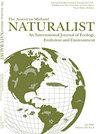高原松树林捕蛇活动的时空格局
IF 0.6
4区 环境科学与生态学
Q4 Agricultural and Biological Sciences
引用次数: 2
摘要
摘要物种在空间和时间上的出现模式是理解其生态的基本组成部分,因为这种变化通常反映了对当地环境梯度的反应。我们建立了物种特异性模型,以了解预测山地松林中五种蛇的捕获和活动的空间和时间因素:铜头蛇(Agkistrodon contortrix)、赛蛇(Coluber constrictor)、马鞭蛇(Masticophis鞭毛)、西部鼠蛇(Pantherophis obsoletus)和西部肋骨蛇(Thamnophis proximus)。从5月中旬到7月中旬(2018年、2019年、2020年),我们在经历不同管理制度的两个高地松林中监测了黄杨:(1)频繁疏伐和规定焚烧,(2)不频繁疏伐并规定焚烧。在不常被砍伐和焚烧的森林中捕获的铜斑蛇和西部肋骨蛇数量显著增加,而在经常被砍伐和燃烧的森林中捕捉的参赛者数量显著增加。随着夏季的进展,参赛者和西部鼠蛇的捕获量在接下来的每个月都有所减少,7月份捕获量最少。西部鼠蛇是唯一对天气有反应的物种,这种活动随着降雨量的增加而减少。没有任何变量是coachwhip捕获的重要预测因素。空间捕获量的变化可能归因于每个物种基于其栖息地偏好的生理耐受性或每个森林中猎物可用性的差异。生理耐受性、觅食行为或其繁殖表型之间的相互作用可能是活动模式时间变化的基础。本文章由计算机程序翻译,如有差异,请以英文原文为准。
Spatiotemporal Patterns of Snake Captures and Activity in Upland Pine Forests
Abstract. Patterns of species' occurrences across space and time are fundamental components to understanding their ecology, as this variation often reflects responses to local environmental gradients. We built species-specific models to understand the spatial and temporal factors predicting captures and activity of five snake species in upland pine forests: copperhead (Agkistrodon contortrix), racer (Coluber constrictor), coachwhip (Masticophis flagellum), western ratsnake (Pantherophis obsoletus), and western ribbonsnake (Thamnophis proximus). From mid-May to mid-July across 3 y (2018, 2019, 2020), we monitored boxtraps in two upland pine forests experiencing different management regimes: (1) subjected to frequent thinning and prescribed burning, and (2) subjected to infrequent thinning and prescribed burning. Significantly more copperheads and western ribbonsnakes were captured at the infrequently thinned and burned forest, whereas significantly more racers were captured at forest subjected to frequent thinning and burning. As the summer progressed, captures decreased each subsequent month for both racers and western ratsnakes, with the fewest captures in July. Western ratsnakes were the only species to exhibit a response to the weather in that activity decreased with increasing rainfall. No variables were significant predictors of coachwhip captures. The variation in captures across space may be attributed to the physiological tolerances of each species based on their habitat preferences or differences in prey availability at each forest. Interactions between the physiological tolerances, foraging behaviors, or their reproductive phenology may be underlying the temporal variation in activity patterns.
求助全文
通过发布文献求助,成功后即可免费获取论文全文。
去求助
来源期刊

American Midland Naturalist
环境科学-生态学
CiteScore
1.20
自引率
0.00%
发文量
38
审稿时长
18-36 weeks
期刊介绍:
The American Midland Naturalist has been published for 90 years by the University of Notre Dame. The connotations of Midland and Naturalist have broadened and its geographic coverage now includes North America with occasional articles from other continents. The old image of naturalist has changed and the journal publishes what Charles Elton aptly termed "scientific natural history" including field and experimental biology. Its significance and breadth of coverage are evident in that the American Midland Naturalist is among the most frequently cited journals in publications on ecology, mammalogy, herpetology, ornithology, ichthyology, parasitology, aquatic and invertebrate biology and other biological disciplines.
 求助内容:
求助内容: 应助结果提醒方式:
应助结果提醒方式:


